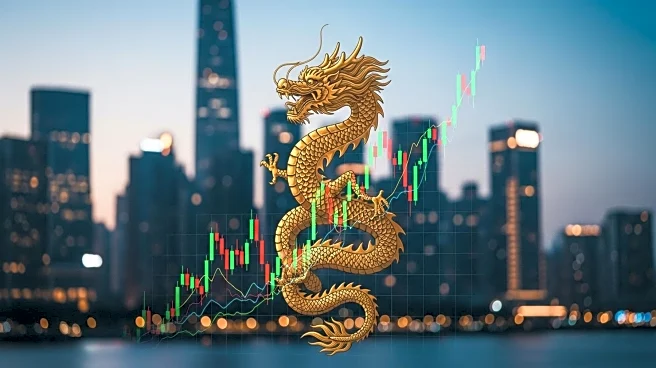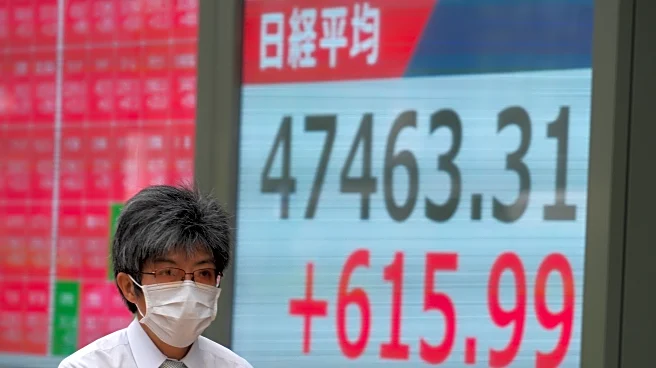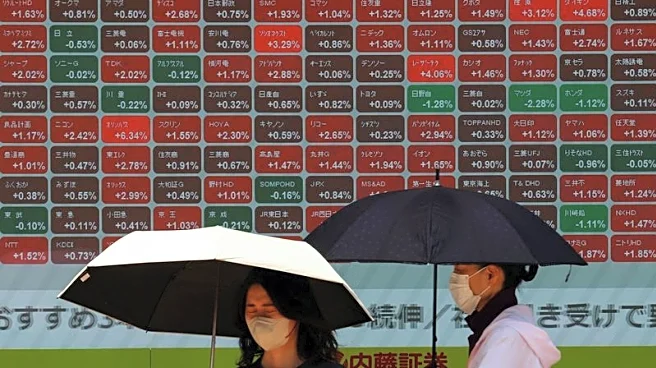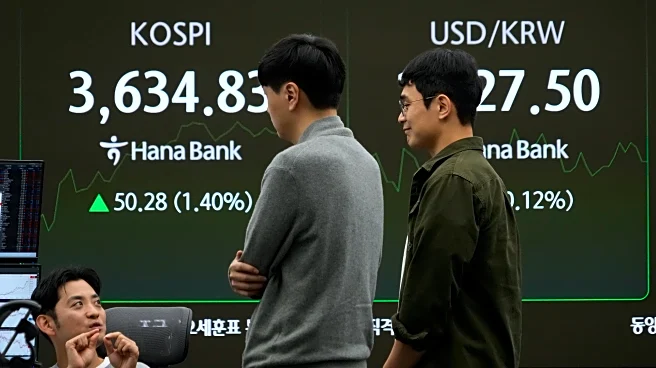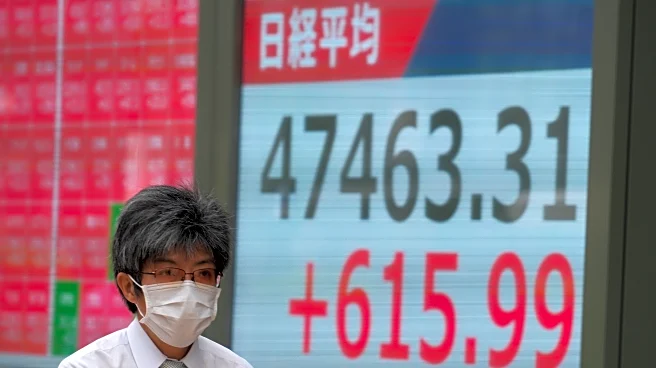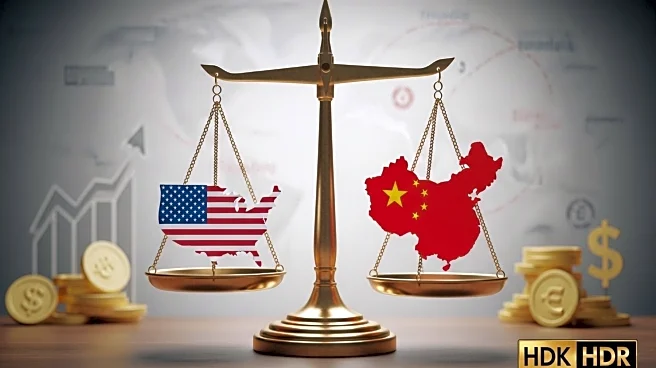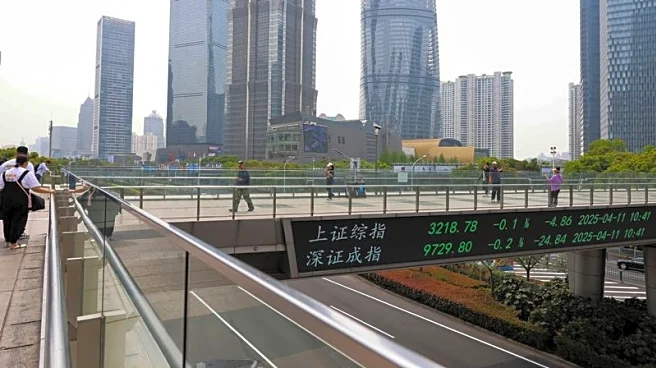What's Happening?
Asia-Pacific markets experienced an upward trend on Wednesday, diverging from Wall Street's declines due to renewed trade tensions between the U.S. and China. President Trump criticized China for not purchasing
soybeans, labeling it an 'economically hostile act' and threatened potential retaliatory measures such as a cooking oil embargo. This development has contributed to heightened market volatility. Despite these tensions, major Asian indices showed gains, with Japan's Nikkei 225 rising by 1.76% and South Korea's Kospi increasing by 2.68%. Meanwhile, China's consumer prices fell more than anticipated in September, indicating ongoing deflationary pressures and sluggish domestic demand.
Why It's Important?
The renewed trade tensions between the U.S. and China have significant implications for global markets, particularly affecting investor sentiment and economic stability. The rise in Asian markets suggests a regional resilience or differing economic dynamics compared to the U.S. market. The deflationary trend in China could prompt further monetary easing, impacting global trade and economic policies. The situation underscores the interconnectedness of global economies and the potential for geopolitical actions to influence market behaviors and economic forecasts.
What's Next?
The ongoing trade tensions may lead to further retaliatory measures from both the U.S. and China, potentially affecting global supply chains and trade agreements. Investors and policymakers will likely monitor these developments closely, assessing their impact on market stability and economic growth. The situation may prompt discussions on trade policy adjustments and diplomatic negotiations to mitigate economic disruptions.
Beyond the Headlines
The trade tensions highlight broader geopolitical challenges and the complexities of international economic relations. The potential for retaliatory trade measures raises ethical and strategic considerations for global leaders, emphasizing the need for diplomatic solutions to avoid long-term economic consequences.
